It has been quite a long time, over two and a half years, since I have posted about food in this blog. Mostly, it has been because I have been so concentrated on other hobbies and just getting my PhD work done that blog-worthy cooking and baking have taken a back seat.
But, after the experience I (and others) have had with this particular recipe, I felt compelled to write a post about it in case it helps others who might be having issues with it.
Like everyone and their mother during this quarantine, I have been baking bread, the only difference is that I am not new to bread-baking and I have not been using sourdough but have chosen to keep making regular yeast breads in forms I have not before, hence the Pullman loaf.
The Pullman loaf has a long history I won’t bore you with, but baking it requires a particular pan that has a lid, thus containing the dough within the pan and making it square.
The particular recipe I used, from The Bread Bible by Rose Levy Beranbaum, calls for a Pullman loaf pan that is 16″x4″x4″, which is larger that most Pullman loaf recipes out there which call for a 13″x4″x4″ pan.
In other words, that is a lot of bread.
But that is not the problem and neither are the ingredients (which I won’t fully list here because bread recipes are so long), or the taste, which is quite good when the bread is cooked properly.
The problem with this recipe is in the temperature of the oven and the length of baking time it calls for.
The recipe instructs you to bake in a 425F oven for 30 minutes with the lid on, then an additional 30 minutes with the lid off, tenting the bread with foil if it browns too quickly.
I did that the first time I made it and my bread burned on the outside, specially the sides and the bottom, which were directly in contact with the pan for the longest.
And yes, I do have an oven thermometer and I know my oven well so I am certain the temperate was accurate.
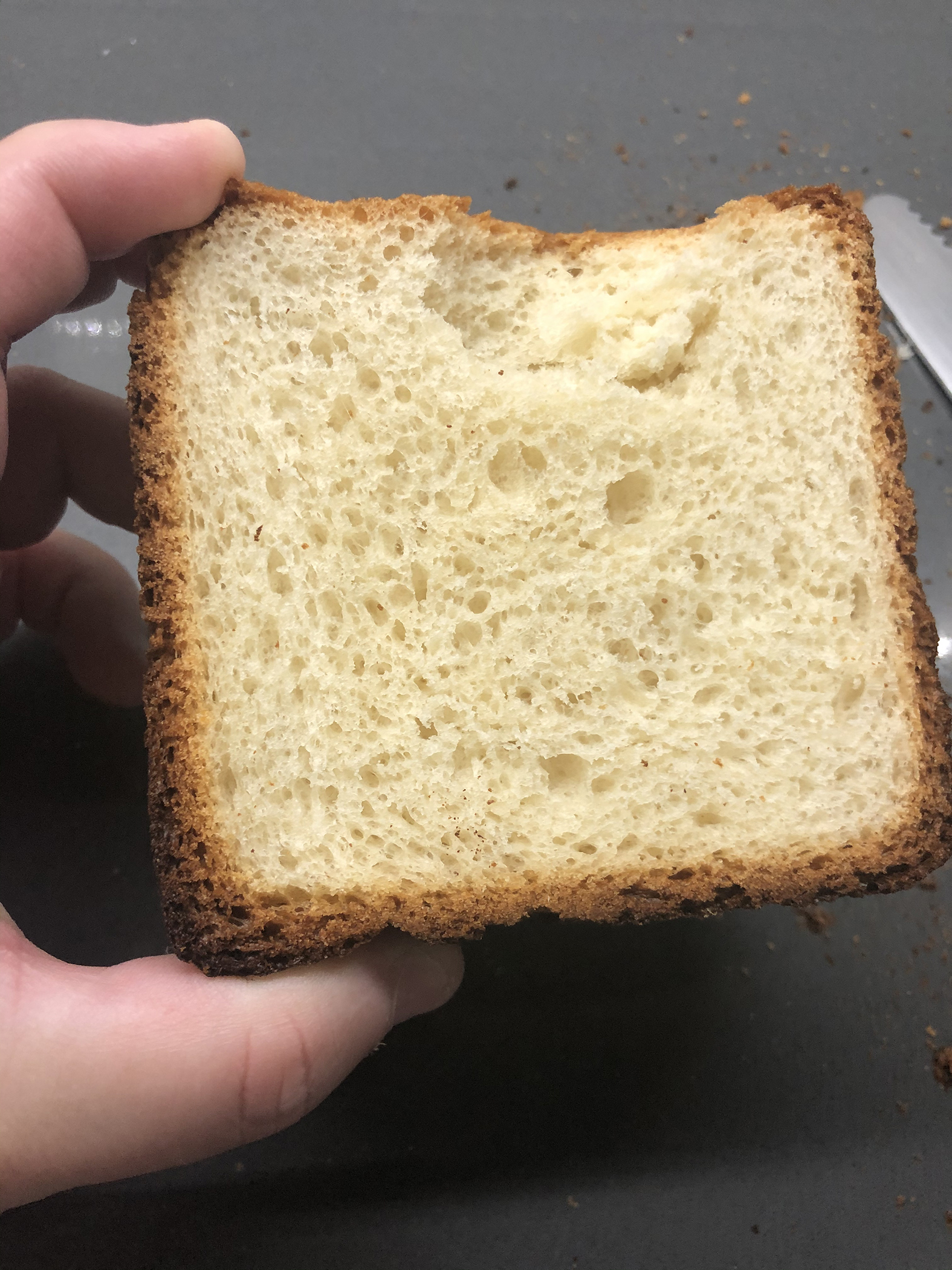
I was pretty disheartened because I had seen so many photos and watched so many videos of perfectly golden and soft Pullman loaves, and that’s was I was expecting, not this burned, hard crust and overcooked crumb brick, as my son called it, that came out of my oven.
So I asked around some bread forums and it turned out that I was not the only person who had this experience with this particular recipe.
Further research revealed that in fact the temperature and baking time this recipe indicates is higher and longer than any other recipe for a Pullman loaf EVEN of that size. For example, The Professional Pastry Chef, by Bo Friberg, calls for 400F and 30 minutes with lid plus 15 minutes without, or until bread is fully baked, for TWO loaves of the same size as the one in Levy Beranbaum’s recipe.
The King Arthur Flour recipe for Pain de Mie, which is same as a Pullman loaf, calls for a 350F oven.
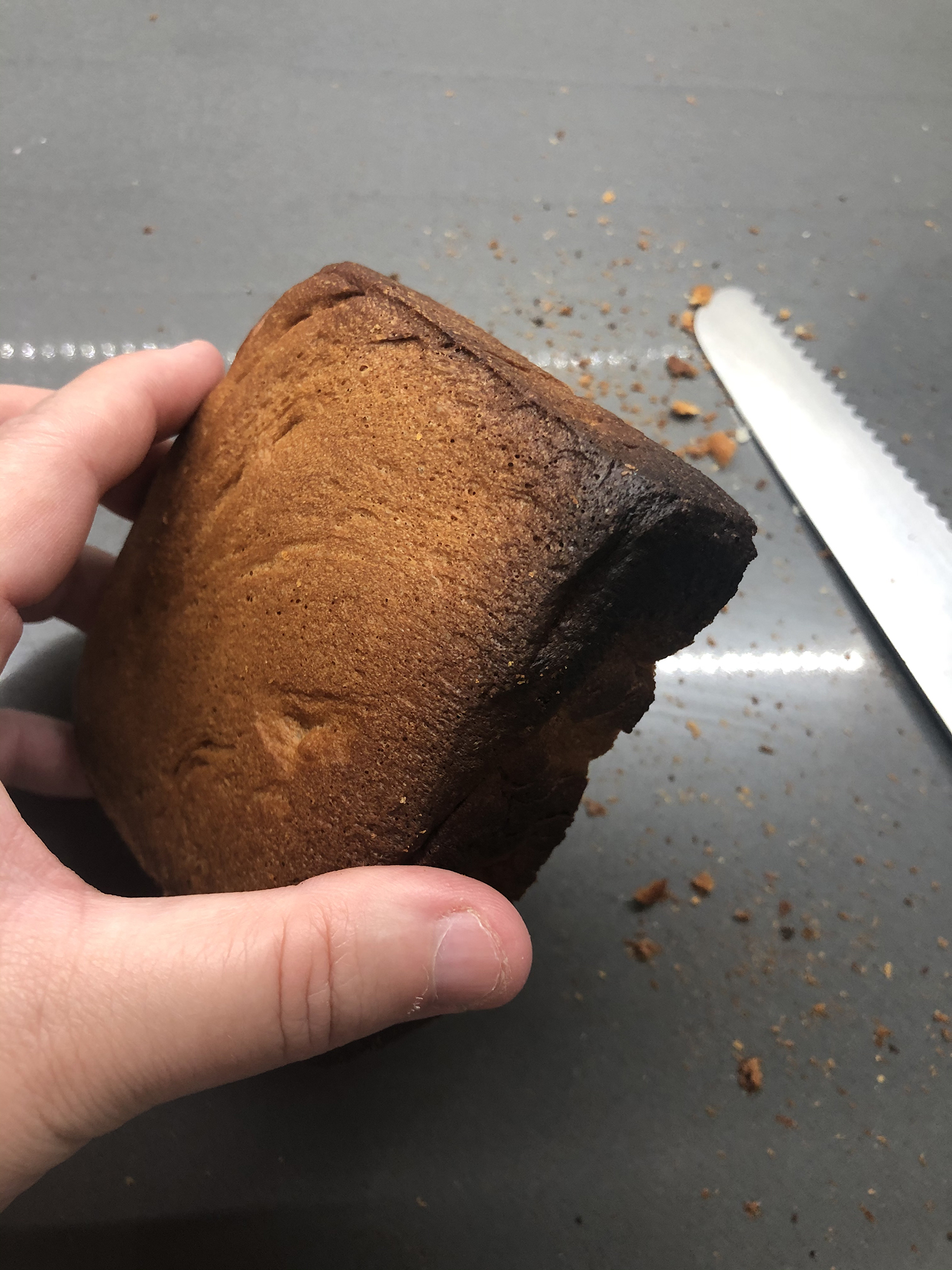
As an aside, my rising time was also considerably shorter than what she claims it will be. The recipe says 1 to 1 1/2 hours for the dough to come up just about 1/2″ below the top of the pan, mine filled the pan in half an hour. But this maybe due to a variety of reasons.
But, this recipe appeals to a lot of people, including me, because it takes less than 2 hours from start to finish as there is no pre-ferment, no sponge, not letting the dough rise before shaping, etc. Plus, it does produce a great crumb and texture.
So, determined to put my expensive loaf pan to use and get this thing right, I went at it again.
Based on the research I had done, I set the oven to 390F and baked the bread for 30 minutes with the lid on. At that point, I took the internal temperature of the bread and it was just over 200F. Most breads are done when they reach an internal temperature of 190F to 200F, with enriched breads being an exception.
So I took the bread out of the oven completely. It was nicely golden but not burned like the previous one and thoroughly cooked.
I let it cool completely before slicing and it was perfect.
The crust was crunchy (though not overly so), but it became soft and much more like store-bought sandwich bread the next day.
Ultimately, 30 minutes at 390F with the lid on was plenty for this bread to be cooked and browned the right amount.
In the recipe’s “Pointers for Success,” Levy Beranbaum says that “It is essential to bake this bread for the full baking time, as a dark firm crust will keep it from caving in or collapsing: even so, the center still tends to dip about 1/2”. Given my experience, I wholeheartedly disagree.
If you follow that “pointer for success” you will end up with an inedible, burnt crust over almost 1/4″ inch thick which is unacceptable.
My second try not only did not dip (much), it also was fully baked and delicious.
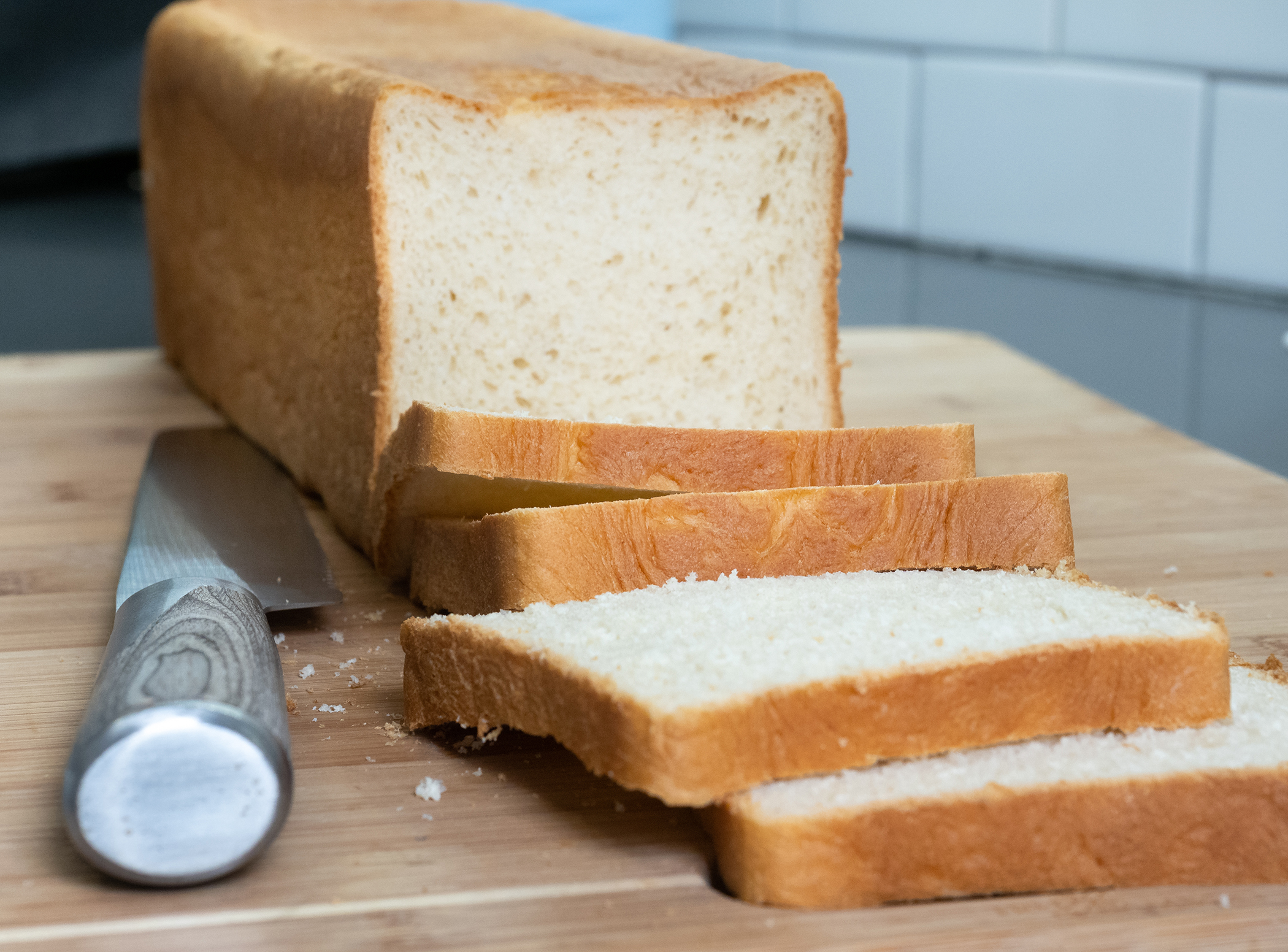
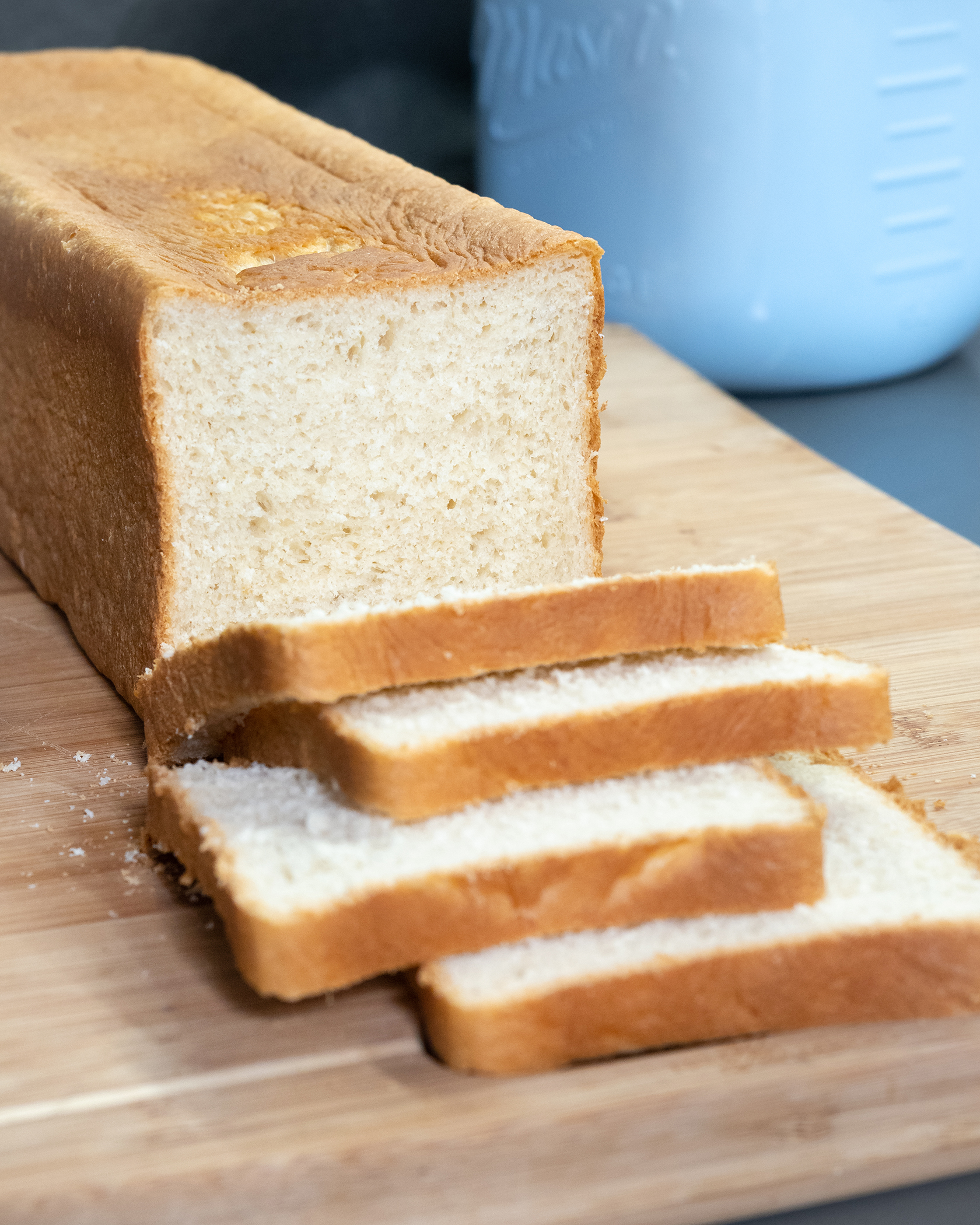
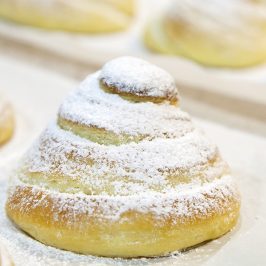
Robert
I attempted my first pullman loaf. I used the King Arthur Flour recipe for Pain de Mie. My issued was after 4 hour it only rose to about half way up pan (13x4x4). I had made 2 loafs at once. The interior was great. A tad on the dense side, but cooked and no burning.
My issue was lack of rise. I am new to baking and I think I did not knead the bread enough. Ambient air temp was 67 degrees, did 1hr30 min in cover bowl, 4 hours in pan waiting for rise (also covered). Went ahead and cooked according to direction and got 2 very well cooked 1/2 loafs.
Penelope
How much dough did you put in your 13-inch Pullman pan?
Faranak
Recepie is perfect.tnx
JDauray
I am so glad you posted this. I was using her book this weekend to bake some breads. How is tempted to try her pain de me, but the 1/2-in dip and the bake time didn’t sit right with me. What you’re saying makes so much more sense. I will have to try this week.
Karen
Thanks! Your time & temp are perfect. I gave very little “dip” in the center now.